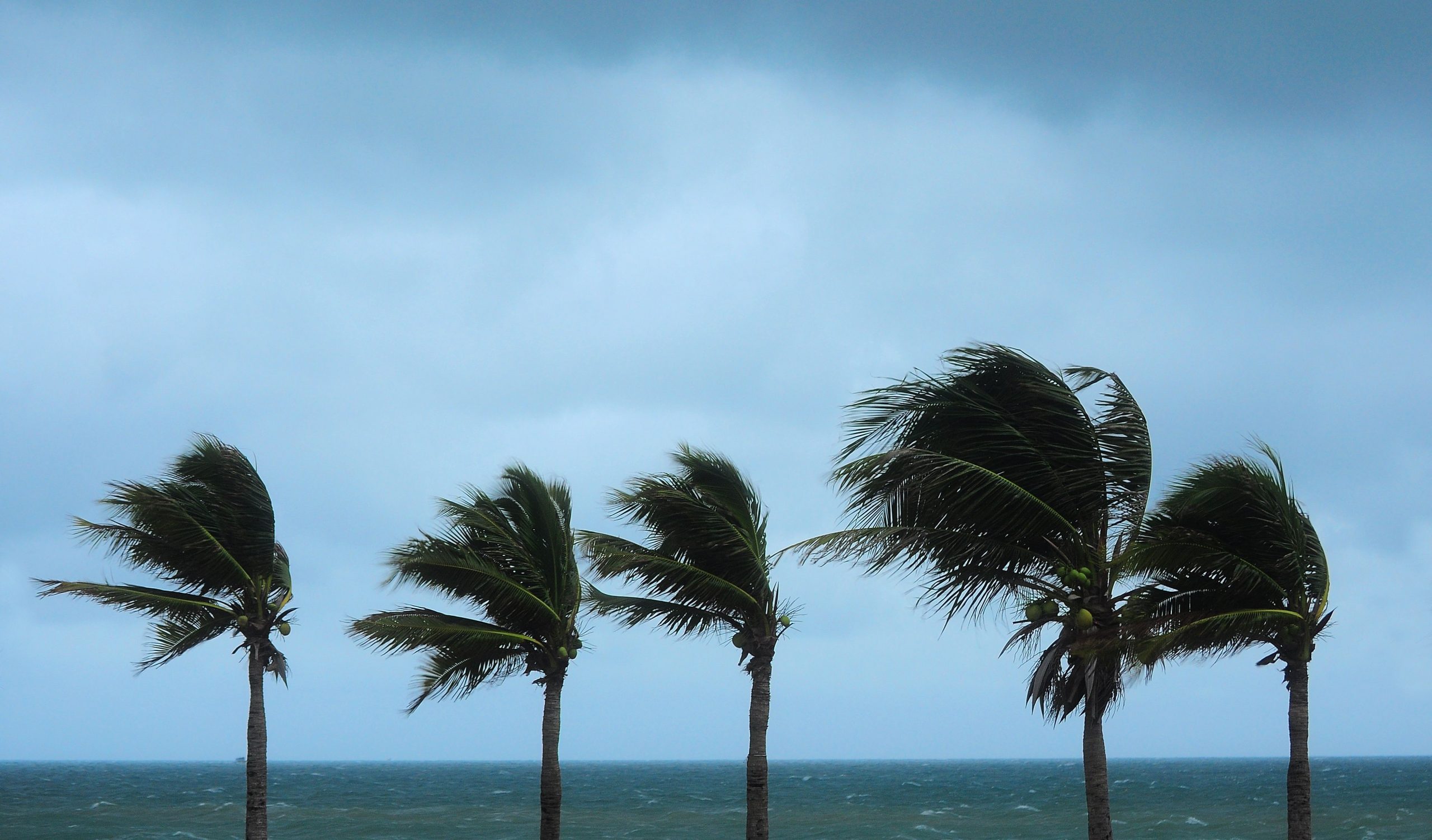What You Should Know About OSHA Aerial Lift Wind Speed Restrictions

A Closer Look at OSHA Aerial Lift Wind Speed Restrictions
Inclement weather comes in many forms. Generally, aerial lift operators know to avoid using a lift in snow, sleet, and rain. On the other hand, they may continue to use a lift in windy conditions despite strong winds making the lift unstable and leading to tip-overs.
OSHA aerial lift wind speed restrictions must be understood and followed at all worksites where these lifts are present. That way, aerial lift operators understand to avoid using a lift if the wind becomes too much to handle. They will also know how to track wind speed and determine if and when a job site becomes unsafe.


Judging Crane Safety in Windy Conditions
When weather conditions change, project managers and site supervisors must determine whether an aerial lift may be operated safely or if the work should stop. Lift manufacturers provide maximum wind speed ratings for operating boom lifts and other specifications for how and when a lift may be used in windy conditions. These specifications depend on the type of load. The Occupational Safety and Health Administration (OSHA) also provides guidelines and rules for the operation of aerial lifts during windy conditions. OSHA aerial lift wind speed restrictions must be followed to ensure safety at your worksite, protect your property, and avoid hefty fines!
Managers and supervisors must also use general safety protocols from industry associations to determine that it’s safe to continue or that work must be stopped. Wind direction is another critical consideration. Winds that blow in from behind the lift will have a different impact on the vehicle’s stability than wind blowing from the side or the front of the truck.
How Wind Direction Impacts Aerial Lifts
OSHA aerial lift wind restrictions address the impact of wind on the vehicle’s handling. When the wind blows in from behind the lift, it can cause the load center to shift, impairing the lift’s capacity. The load may even be dropped. Wind from the rear increases the lift’s turning radius while decreasing the truck’s lifting capacity.
When the wind shifts to the side of the lift, it can cause the load to blow off the vertical and put an added side load on the lift. The wind tunnel effect happens when you have a lift in between two structures. The velocity of the wind can increase, which may cause the safe limit for the lift to decrease even if the general wind speed is below the aerial lift manufacturer’s wind rating.
Aerial Lift Wind Restrictions: A Case Study
Let’s consider a real-world example involving a scissor lift operator to better understand the importance of OSHA aerial lift wind speed restrictions.
A Notre Dame University student was tasked with filming the school’s football practices while aboard a raised scissor lift. It was a windy day, and the student worker — who had not received aerial lift safety training — was told to climb onto the aerial lift and film practices from above. That day, wind gusts exceeded 50 mph, and the lift was raised to approximately 40 ft. Tragically, the high winds caused the lift to tip over, and the student was killed.
The tragedy above highlights one of the key reasons OSHA imposes man lift wind restrictions that apply to all types of aerial lifts — because failure to operate an aerial lift safely puts an operator, bystanders, and others in danger. Thankfully, OSHA aerial lift wind speed restrictions help improve workplace safety by requiring workers to analyze the current wind conditions before operating an aerial lift and immediately halting work whenever wind speeds exceed safe levels.
Training Workers in OSHA Aerial Lift Wind Speed Restrictions
Safely working with aerial lifts in high winds requires comprehensive training. As an employer, it is your responsibility to ensure all workers receive OSHA-approved aerial lift certification and safety training. Understanding OSHA aerial lift wind speed regulations can be challenge without thorough education and training.
Aerial lift certification and safety training teach workers about a wide range of boom lift wind restrictions and guidelines, such as:
Never Operate an Aerial Lift in Winds Over 20 MPH


This is perhaps the most important aerial lift wind restriction to be aware of. The OSHA aerial lift wind speed section 1926.1431(k)(8)(i) states. “When wind speed (sustained or gusts) exceeds 20 mph at the personnel platform, a qualified person must determine if, in light of the wind conditions, it is not safe to lift personnel. If it is not, the lifting operation must not begin (or, if already in progress, must be terminated).
Falls are the leading cause of construction industry deaths, according to the U.S. Centers for Disease Control and Prevention (CDC). They’re also among the top causes of aerial lift operator deaths and often occur due to high winds and other severe weather conditions.
According to the Beaufort Wind Force Scale, most powered access platforms and boom lifts should only be used when winds are less than level 5 on Beaufort’s scale of 0 to 12. Level 5 is described as a “fresh breeze.”
Stay Within the Lift’s Vertical or Horizontal Reach Limits
Before operating an aerial lift, operators need to read and understand the manufacturer’s instructions for vertical and horizontal reach limits. When these limits are exceeded, balance and stability issues can significantly worsen in high wind conditions.
As a general rule, the higher the lift is raised, the greater the adverse effects and importance of aerial lift wind restrictions. It’s also important to take into account the combined weight of your workers, along with any tools or equipment on board, when calculating the load weight. Using outriggers and stabilizers helps steady a lift during high wind conditions.
Watch for Electrical Power Lines and Other Potential Hazards
Power lines present a safety hazard to aerial lift workers. When setting up a worksite, employers and workers need to ensure that there are no potential hazards near an aerial lift, and verify that wind levels are below OSHA aerial lift wind speed restrictions.
Remember that power lines may swing widely in high winds. Aerial lift operators must remain at least 10 ft. away from the widest arc of live electrical lines. Operators must also wear protective clothing, such as hard hats, rubber boots, and insulated gloves.
Use Fall Protection Equipment
Fall protection equipment is designed to prevent workers from injuries or fatalities due to falling from an aerial work platform. Protective equipment includes full-body harnesses, shock-absorbing lanyards, and platform guardrails.
OSHA states that fall protection harnesses aren’t required on scissor lifts if a properly functioning guardrail system is in place. If, however, there’s no guardrail system in place or the system isn’t fully functional and safe, harnesses and lanyards are mandatory. In addition, even on lifts with guardrails and fall protection equipment, OSHA aerial lift wind restrictions prohibit operation in winds exceeding 20 mph.
Prioritize Lift Stabilization
Along with using fall protection equipment, proper lift stabilization and positioning play critical roles in preventing aerial lift accidents at all times. Stabilization is even more critical when aerial lifts encounter wind speed.
Lift stabilization involves placing an aerial lift on level ground, load placement, and load configuration. Whatever the type of aerial lift, ensuring it’s stable and secure is crucial.
Other Weather Hazards to Consider
High winds and wind gusts pose severe problems for aerial lift operators. OSHA aerial lift wind speed regulations are in place for a reason, after all. But other weather conditions can also hamper an operator’s ability to use a lift safely
In addition to aerial lift wind speed considerations, operators need to be alert to other weather hazards, including:
✓ Cold Temperatures
Winter brings frigid temperatures, and aerial lift operators must wear appropriate cold-weather clothing and accessories. Hats, gloves, and other winter apparel are crucial for operators who use a lift in low temperatures. In addition, aerial lift operators should limit their time outdoors in cold weather. They should also take their breaks indoors to warm up throughout their work shifts.
Another concern with cold weather is how it impacts the operation of the lift. When the temperature drops, hydraulic fluids can become thicker, which can slow the lift’s operating speed and lead to a slower response time. Additionally, essential lubricants can also thicken, impairing proper lubrication of many of the lift’s components. Further, the machinery may warp and become more brittle instead of having its normal strength and load capacity.
✓ Hot Temperatures
Extreme temperatures can be deadly. When the forecast heats up, aerial lift operators may face extreme heat for extended periods of time. Hydration is key here – drinking water can help keep symptoms of overheating at bay. Frequent breaks are helpful, too. Should the heat ever become too overwhelming, workers should notify supervisors immediately.
✓ Rain and Snow
Rain and snow can make it difficult for an aerial lift operator to focus on the task. When rain or snow creates unsafe work conditions, aerial lift operators must stop working. Furthermore, it’s essential to keep an eye on the weather forecast. If rain or snow is on the way, an employer should adjust aerial lift operators’ schedules as needed.
Diligence is paramount, particularly when it comes to severe weather. Employers that recognize the importance of workplace safety can take measures to prevent aerial lift operators from working in high winds or other harsh conditions. They can also do their part to educate workers about OSHA aerial lift wind speed restrictions and other workplace safety requirements.
Wind Restrictions for Aerial Lifts – The Bottom Line
Employers benefit when they dedicate time, energy, and resources to train workers in aerial lift safety. With a comprehensive safety training program, your workers learn about OSHA aerial lift wind speed restrictions and why they need to account for wind when they use an aerial lift. Additionally, your workers learn how to minimize the risk of aerial lift accidents, and how to reduce or eliminate the risk of OSHA wind speed for aerial lift compliance penalties and fines.
Of course, you need the right aerial lift safety training provider to teach your workers how to properly use an aerial lift in all types of weather conditions. By partnering with ALC, you can make it simple for workers to learn about aerial lift wind restrictions and other aerial lift safety topics.
Partner with ALC for Aerial Lift Safety Training
Employers are legally required to train workers about OSHA aerial lift wind speed regulations and other safety best practices before they begin using aerial lifts. Fail to provide such learning opportunities and you may be putting your workers at greater risk of accidents and injuries. Such accidents pose a threat to safety, property, and profit.
AerialLiftCertification.com is a leader in OSHA-compliant operator training and safety programs. No matter the weather in your part of the country, count on our training courses to provide the actionable information workers need to stay safe and productive. Our online classes are fast, affordable, and easy to complete. Since they were created by highly experienced aerial and scissor lift operators with a thorough understanding of industry safety requirements, you can trust the information to be updated and comprehensive.
Want to bring training in-house? The Operator Training Kit is an excellent investment. You’ll get all the resources you need to train your team. We also offer a Train a Trainer course should you opt to manage your own future training opportunities. The affordable Bundle Package allows you access to both courses to increase your savings.
To learn more about OSHA-compliant aerial lift safety training or sign up for any of our courses, please contact us online or call us today at (888) 278-8896.